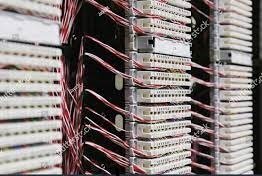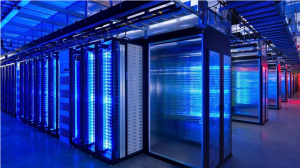Understanding Network Infrastructure: MDFs, IDFs, and On-Site Data Centers Explained
Introduction:
In today’s digitally connected world, network infrastructure serves as the backbone of organizations, facilitating seamless communication and data exchange. To achieve this level of efficiency, businesses rely on various key components, each playing a crucial role in the overall network architecture.
In this blog post, we’ll dive deep into the fundamentals of network infrastructure, shedding light on
Main Distribution Frames (MDFs)
Intermediate Distribution Frames (IDFs)
and on-site data centers – the bedrock of modern connectivity.
Whether you’re an IT enthusiast, a business owner, or simply curious about the inner workings of network technology, this article will provide valuable insights into the intricacies of network infrastructure. Let’s start by demystifying the role of MDFs in the world of networking.
Here key components of network infrastructure: MDFs, IDFs, and on-site data centers.
1. MDF (Main Distribution Frame):

The Main Distribution Frame, commonly referred to as MDF, is a critical part of a network infrastructure. It serves as the central point where various data and communication lines from the outside world and service providers terminate within a building or a campus. MDFs are usually found in telecommunication rooms or dedicated areas, often located on the ground floor or in the basement of a building.
This table succinctly outlines the key functions of MDFs, providing a clear understanding of their essential role in network infrastructure.
| Key Functions of MDFs | Description |
|---|---|
| Termination | MDFs house the primary network equipment responsible for terminating external connections, such as internet service providers (ISPs), telephone lines, and other wide-area network (WAN) links. |
| Connectivity | They serve as the central hub to interconnect the incoming data lines with the internal network infrastructure, like IDFs (Intermediate Distribution Frames) and other networking equipment. |
| Distribution | The MDF distributes network services to different parts of the building or campus through the IDFs. |
2. IDF (Intermediate Distribution Frame):

The Intermediate Distribution Frame, or IDF, is another crucial element of a network infrastructure, complementing the MDF’s functions. IDFs are distributed throughout a building or campus, closer to the end-users they serve. Unlike MDFs, IDFs are not as extensive and do not terminate external connections.
key functions of IDFs:
| Key Functions of IDFs | Description |
|---|---|
| Aggregation | IDFs aggregate and distribute the network signals received from the MDF to smaller, localized areas, reducing the overall cable length and signal degradation. |
| Connectivity | They provide the connectivity points for networking devices (e.g., switches, routers) and end-user devices (e.g., computers, printers) within a specific area or floor. |
| Flexibility | IDFs allow for more scalable and manageable network expansion, as adding or modifying network equipment in specific areas is easier and doesn’t impact the entire network. |
With this table, we get a comprehensive understanding of the critical functions that IDFs fulfill in the network infrastructure, contributing to improved connectivity and network efficiency within localized areas or floors.
3. On-Site Data Centers:

On-site data centers are dedicated facilities used to store, manage, and process data and applications for an organization. These data centers may vary in size and complexity based on the organization’s needs. They can range from a small server room in a building to a large-scale, purpose-built facility.
Key features of on-site data centers include:
| Key Features of On-Site Data Centers | Description |
|---|---|
| Data Storage | Data centers store the organization’s critical data, applications, and services on servers and other storage devices. |
| Security | Data centers implement robust security measures to protect sensitive data from unauthorized access, physical threats, and cyberattacks. |
| Redundancy | To ensure high availability, data centers often incorporate redundancy in power supply, networking, and hardware components to minimize downtime and prevent data loss. |
| Cooling and Environmental Control | Due to the high heat generated by servers, data centers employ sophisticated cooling systems to maintain optimal temperatures for equipment operation. |
| Connectivity | Data centers are well-connected to the rest of the network infrastructure, including the MDF and IDFs, to facilitate data exchange and access. |
In summary, MDFs, IDFs, and on-site data centers play vital roles in building a robust and efficient network infrastructure. The MDF acts as the central hub for external connections, IDFs distribute signals to localized areas, and on-site data centers handle data storage and processing for the organization.
Comparison table between MDF (Main Distribution Frame) and IDF (Intermediate Distribution Frame):
| Aspect | MDF (Main Distribution Frame) | IDF (Intermediate Distribution Frame) |
|---|---|---|
| Location | Usually located in a central telecommunication room or dedicated area, often on the ground floor or in the basement of a building. | Strategically placed throughout a building or campus, typically on each floor or in different wings, closer to the end-users they serve. |
| Function | – Termination: Primary network equipment responsible for terminating external connections. – Connectivity: Central hub to interconnect incoming data lines with internal network infrastructure. – Distribution: Distributes network services to different parts of the building or campus. | – Aggregation: Aggregates and distributes network signals from the MDF to localized areas. – Connectivity: Provides connectivity points for networking devices and end-user devices within a specific area or floor. – Flexibility: Allows for scalable and manageable network expansion within specific areas. |
| Equipment | Houses networking equipment, such as core switches, routers, and sometimes servers, providing essential services for the entire network. | Contains patch panels and switches to facilitate connectivity for local network devices; does not house the primary network equipment. |
| Power and Backup | Equipped with redundant power sources and backup systems (e.g., UPS) to ensure continuous operation, even during power outages. | May have its power distribution and backup systems, especially in larger installations, to ensure localized resilience. |
| Cable Management | Proper cable management is essential to avoid clutter, maintain signal integrity, and ease maintenance and upgrades. | Cable management is essential but typically on a smaller scale compared to MDFs. |
| Area Coverage | Covers the entire building or campus, serving as the central point for external connections and primary network equipment. | Covers specific areas or floors, distributing network signals from the MDF to localized areas. |
| Network Size | Generally larger in scale, accommodating connections for the entire building or campus. | Smaller in scale, focusing on localized areas within the building or campus. |
| Importance in Network Hierarchy | The central backbone of the network, serving as the primary point for external connections and major networking equipment. | Secondary to the MDF, responsible for localized distribution and connectivity. |
This comparison table outlines the key differences and functions of MDFs and IDFs, showcasing their distinct roles within a network infrastructure.
